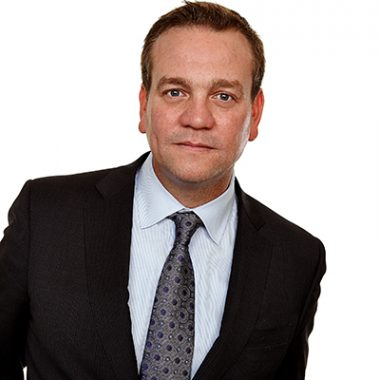Errors and omissions insurance provides financial advisors and registered investment advisors (RIAs) with protection against client claims related to professional mistakes, negligence, or failure to deliver promised services. This professional liability insurance typically helps pay for legal fees, settlements or judgments resulting from such claims. For firms subject to regulatory oversight and client scrutiny, errors and omissions (E&O) insurance can help reduce exposure to potential litigation tied to investment advice, disclosure lapses or administrative missteps.
Add new clients and AUM at your desired pace with SmartAsset’s Advisor Marketing Platform. Sign up for a free demo today.
How Errors & Omissions Insurance Works
When professionals face a situation where a client alleges that their professional advice has resulted in financial harm, E&O insurance comes into play. This insurance coverage becomes even more vital for financial advisors and RIAs, given clients often entrust them with their life savings.
To break it down:
Despite the best intentions, even seasoned professionals can make a mistake, and a single claim has the potential to financially drain a business. Therefore, having professional liability insurance is a crucial step to mitigate such risks.

Client Acquisition Simplified: For RIAs
- Ideal for RIAs looking to scale.
- Validated referrals to help build your pipeline efficiently.
- Save time + optimize your close rate with high-touch, pre-built campaigns.

CFP®, CEO
Joe Anderson
Pure Financial Advisors
We have seen a remarkable return on investment and comparatively low client acquisition costs even as we’ve multiplied our spend over the years.
Pure Financial Advisors reports $1B in new AUM from SmartAsset investor referrals.
How Much Does Errors and Omissions Insurance Cost?
The cost of E&O insurance varies based on several factors, including the advisor’s experience, the size of their client base, and the types of services offered.
The size of a financial advisory firm and its annual revenue significantly impact E&O insurance premiums. Larger firms with higher revenues generally face higher premiums due to the increased risk associated with their operation. The chosen coverage limits and deductibles also affect the cost.
Premiums for E&O insurance can vary based on the type and size of business being insured, as well as the provider. For example, The Hartford says its customers on average pay a minimum of $76 per month. However, E&O coverage may be significantly more for financial planners and RIAs, according to Insureon, an online marketplace for small business insurance. On average, financial planners and investment advisors pay $287 per month or $3,443 per year, according to Insureon estimates from June 2025.
While this might seem like a significant expense, the protection it offers can far outweigh the costs, especially considering the potential financial impact of a lawsuit.
When You Need E&O Insurance for Your RIA

Some states legally require RIAs to hold professional liability insurance. However, even in the absence of such requirements, industry best practices strongly recommend this insurance. There are many situations where you may find insurance protection to be a great safety net for your business as the legal system can be unpredictable.
As an example, if a disgruntled client claims that they suffered a financial loss due to ill-founded investment advice or that you failed to perform the promised services, professional liability insurance could help protect you as you may not have to pay for damages out of pocket. And in some cases, having the right insurance could be the difference between keeping your business in operation or draining your bank account.
Stipulations of E&O Coverage
The specific stipulations and terms of E&O insurance for financial advisors can vary, but here are some common elements you might find:
- Coverage limits: The policy will specify the maximum amount the insurance company will pay for a covered claim. There may be separate limits for each claim and an aggregate limit for all claims during the policy period.
- Claims-made coverage: Professional liability insurance is often provided on a “claims-made” basis requiring the policy to be active when both the alleged error or omission occurred and when the claim is made. Retroactive dates may also apply.
- Exclusions: The policy will list situations and circumstances that are not covered, such as intentional wrongdoing, criminal acts and certain types of liabilities. Review the exclusions carefully.
- Reporting requirements: You are typically required to report any potential claims or incidents to the insurer promptly, even if you believe the claim may not materialize into a lawsuit.
It’s important to carefully read and understand all the terms and conditions of your professional liability insurance policy and consult with an insurance professional or attorney if you have any questions or concerns. Additionally, the specific terms and provisions of these policies can vary significantly among insurance providers and industries, so it’s crucial to tailor the coverage to your specific needs.
What Professional Liability Insurance May Not Cover
Typical exclusions from these policies include claims arising from criminal or fraudulent acts, or services provided outside the insured’s officially stated professional services.
You should also note that professional liability insurance doesn’t cover clients who get physically hurt or property damage while you engage in business. These would be typically covered by general liability insurance.
Understanding what professional liability insurance covers and recognizing potential gaps in the policy could help you make smart decisions about additional insurance needs. Make sure you understand what is excluded before you agree to the insurance.
Tips for Avoiding a Professional Liability Disaster

Proactive strategies for risk reduction can have long-term impacts on minimizing potential liabilities. Here are some tips to consider that can help you navigate your professional liability and the coverage you need for protection.
- Keep clear, comprehensive records and documentation
- Ensure clarity in client communication
- Stay updated on industry practices and regulations
- Negotiate your price at each renewal period and don’t just accept premium increases
- Do not offer advice that is outside your expertise
- Follow policies and procedures for every client
You may want to consult with an attorney to make sure you’re as protected as you can be from any potential liability.
Bottom Line
Professional liability insurance, also referred to as E&O insurance, is a significant strategic asset for RIAs and a financial advisors. It provides a financial shield against potential litigation resulting from professional services by covering defense costs, settlements and judgments. However, it’s important to stress here that there’s no plug-and-play, one-size-fits-all solution. Insurance policies should be uniquely tailored to fit your professional needs.
Tips for Growing Your Firm
- SmartAsset AMP (Advisor Marketing Platform) is a holistic marketing service financial advisors can use for client lead generation and automated marketing. Sign up for a free demo to explore how SmartAsset AMP can help you expand your practice’s marketing operation. Get started today.
- Once you have insurance protection, you might want to consider how else you can grow your firm. One great way is to expand on your current type of client. High-net-worth individuals can provide a great source of potential clients to find and choose from.
Photo credit: ©iStock.com/skynesher, ©iStock.com/FatCamera, ©iStock.com/shapecharge
